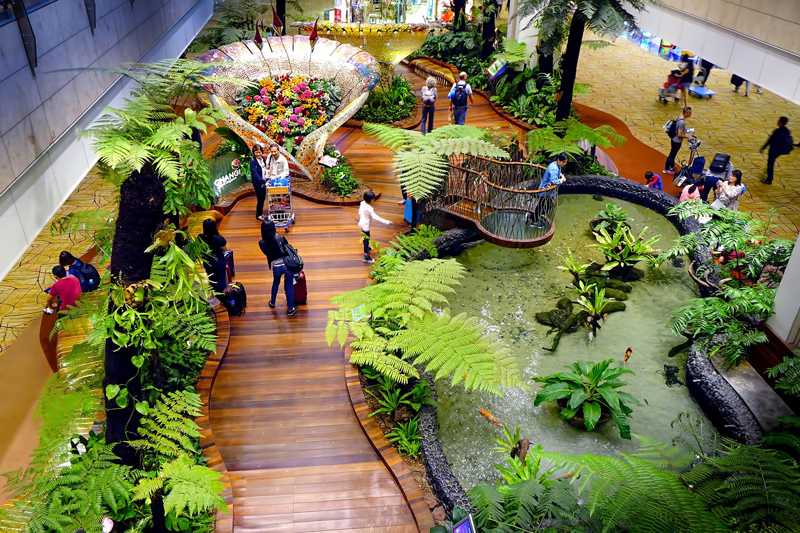 Singapore Changi Airport (IATA: SIN): A Global Benchmark in Aviation Excellence
Singapore Changi Airport (IATA: SIN): A Global Benchmark in Aviation Excellence
Singapore Changi Airport, internationally recognized by its IATA code SIN, stands as one of the world’s most prestigious and efficient airports. Located at the eastern tip of Singapore, this state-of-the-art aviation hub serves as the primary gateway to the country and an essential connector between East and West. Known for its innovation, cleanliness, passenger experience, and architectural marvels, Changi Airport consistently sets the global standard for what an airport can be.
A Brief History
The concept of Changi Airport was born out of necessity in the 1970s as Singapore’s previous airport at Paya Lebar faced increasing congestion. Opened in 1981, Changi Airport was designed to handle growing passenger demand with an eye toward long-term scalability and technological advancement. Since then, it has expanded from a single terminal into a massive complex featuring four terminals and a multi-use lifestyle and entertainment hub, Jewel Changi Airport.
Infrastructure and Terminal Design
Changi currently operates four main terminals (T1, T2, T3, and T4), each equipped with modern facilities, aesthetic design, and efficient layouts. A fifth terminal (T5) is under development and projected to be one of the largest terminals in the world once completed in the 2030s.
Each terminal is interconnected via Skytrain systems, travellators, and walkways, making transfers seamless even during layovers. The terminals are designed not just for function but also for passenger comfort — incorporating wide, naturally lit corridors, open seating areas, gardens, art installations, and quiet zones.
Jewel Changi Airport – More Than Just a Terminal
Opened in 2019, Jewel Changi Airport is a striking glass-and-steel dome that connects directly to Terminal 1. It houses:
Rain Vortex, the world’s tallest indoor waterfall at 40 meters.
Shiseido Forest Valley, a lush indoor garden with walking trails and thousands of plants.
Over 280 retail outlets, restaurants, and cafes.
Canopy Park, featuring attractions such as sky nets, mirror mazes, and discovery slides.
YOTELAIR hotel, cinema, and integrated transport links.
Jewel is a revolutionary concept that merges leisure, nature, shopping, and travel into a single destination — even attracting locals who are not traveling.
Passenger Experience
Changi Airport is world-renowned for its passenger-centric philosophy. Services are designed to reduce stress and enhance comfort during travel. Notable amenities include:
Free Wi-Fi and internet terminals throughout the terminals.
Rest lounges and nap areas for transit passengers.
Free 24-hour movie theaters.
Children’s playgrounds and interactive art spaces.
Showers, gyms, spas, and sleeping pods.
Extensive multilingual signage and helpful airport ambassadors.
For transit passengers, Changi even offers free Singapore city tours, allowing travelers with long layovers to experience the city without leaving the airport ecosystem.
Air Connectivity and Airlines
Changi is a global aviation hub, connecting Singapore to more than 130 countries with over 400 cities served by 100+ international airlines. Major airline partners include:
Singapore Airlines (flag carrier)
Scoot (low-cost subsidiary of Singapore Airlines)
Jetstar Asia
Emirates
Qatar Airways
Turkish Airlines
Lufthansa, among many others.
The airport handles more than 60 million passengers annually in pre-pandemic years, ranking it among the top airports by international traffic.
Cargo Operations
Beyond passengers, Changi is also a critical hub for air freight. It manages over 2 million tonnes of cargo annually, including perishables, pharmaceuticals, and high-value goods. The Changi Airfreight Centre supports fast and secure handling, making Singapore a preferred logistics hub in Asia.
Awards and Global Recognition
Changi Airport has consistently been honored with prestigious accolades:
World’s Best Airport (Skytrax, multiple years)
Best Airport in Asia
Best Airport Leisure Amenities
Best Transit Airport
It is also highly praised for punctuality, customer satisfaction, cleanliness, and sustainability practices.
Sustainability and Innovation
Changi Airport is committed to environmental sustainability, including:
Using solar energy and energy-efficient infrastructure.
Recycling rainwater for irrigation and cooling systems.
Reducing single-use plastics across its premises.
Investing in green building certification (e.g., BCA Green Mark).
It’s also one of the leading smart airports, using AI, data analytics, and biometric technology to streamline immigration, boarding, and baggage handling.
Economic and Strategic Importance
Changi is more than just a travel facility — it is a strategic economic asset for Singapore. The airport:
Supports millions of jobs, both directly and indirectly.
Drives tourism, which contributes significantly to GDP.
Facilitates international trade and foreign investments.
Its seamless connectivity enhances Singapore’s position as a global business, finance, and innovation hub.
The Future of Changi
The upcoming Terminal 5, currently in advanced planning, will feature sustainable architecture, automated systems, and future-ready technologies. Once completed, it will boost Changi’s capacity by 50 million more passengers annually, preparing it for the next generation of air travel.
—
Conclusion
Singapore Changi Airport (SIN) is far more than a transportation node — it is a symbol of Singapore’s ambition, excellence, and forward-thinking spirit. With its blend of world-class services, natural beauty, and cutting-edge infrastructure, Changi has redefined what it means to travel through an airport. Whether you are a first-time visitor, a seasoned traveler, or a transit passenger, Changi offers an experience that is unforgettable — setting the global benchmark for modern aviation.